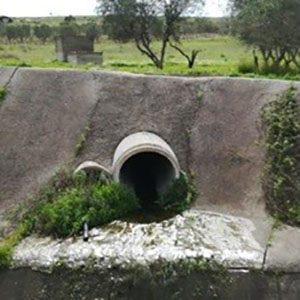Evaluating flow regime alterations due to point sources in intermittent rivers: A modelling approach

Published:28 June 2022
Abstract Views: 971
PDF: 475
S1: 212
S2: 247
S3: 168
HTML: 52
S1: 212
S2: 247
S3: 168
HTML: 52
Publisher's note
All claims expressed in this article are solely those of the authors and do not necessarily represent those of their affiliated organizations, or those of the publisher, the editors and the reviewers. Any product that may be evaluated in this article or claim that may be made by its manufacturer is not guaranteed or endorsed by the publisher.
All claims expressed in this article are solely those of the authors and do not necessarily represent those of their affiliated organizations, or those of the publisher, the editors and the reviewers. Any product that may be evaluated in this article or claim that may be made by its manufacturer is not guaranteed or endorsed by the publisher.
Similar Articles
- Vincenzo Bagarello, Vito Ferro, Dennis Flanagan, Predicting plot soil loss by empirical and process-oriented approaches. A review , Journal of Agricultural Engineering: Vol. 49 No. 1 (2018)
- Hossein Khaledian, Homayoun Faghih, Ata Amini, Classifications of runoff and sediment data to improve the rating curve method , Journal of Agricultural Engineering: Vol. 48 No. 3 (2017)
- Ossama M. M. Abdelwahab, Ronald L. Bingner, Fabio Milillo, Francesco Gentile, Effectiveness of alternative management scenarios on the sediment load in a Mediterranean agricultural watershed , Journal of Agricultural Engineering: Vol. 45 No. 3 (2014)
- Juquan Ruan, Shuo Liu, Wanjing Mao, Shan Zeng, Zhuoyi Zhang, Guangsun Yin, Fine-grained recognition algorithm of crop pests based on cross-layer bilinear aggregation and multi-task learning , Journal of Agricultural Engineering: Vol. 55 No. 3 (2024)
- Eva Audrey Yessito Houessou-Dossou, John Mwangi Gathenya, Mugwima Njuguna, Zachary Abiero Gariy, Andrea Petroselli, Comparative analysis of flood and rainfall frequency in the ungauged sub-watersheds of Kakia and Esamburumbur in Narok town, Kenya, using the EBA4SUB rainfall-runoff model , Journal of Agricultural Engineering: Vol. 53 No. 2 (2022)
- Xiong Bi, Hongchun Wang, Double-branch deep convolutional neural network-based rice leaf diseases recognition and classification , Journal of Agricultural Engineering: Vol. 55 No. 1 (2024)
- Hongbo Wang, Zhicheng Xie, Yongzheng Yang, Junmao Li, Zilu Huang, Zhihong Yu, Fast identification of tomatoes in natural environments by improved YOLOv5s , Journal of Agricultural Engineering: Vol. 55 No. 3 (2024)
- Noureldin Sharaby, Artyom Doroshenko, Andrey Butovchenko, Modelling and verification of sesame seed particles using the discrete element method , Journal of Agricultural Engineering: Vol. 53 No. 2 (2022)
- Yiming Xiao, Jianhua Wang, Hongyi Xiong, Fangjun Xiao, Renhuan Huang, Licong Hong, Bofei Wu, Jinfeng Zhou, Yongbin Long, Yubin Lan, Lychee cultivar fine-grained image classification method based on improved ResNet-34 residual network , Journal of Agricultural Engineering: Vol. 55 No. 3 (2024)
- Federico Preti, Tommaso Letterio, Shallow landslide susceptibility assessment in a data-poor region of Guatemala (Comitancillo municipality) , Journal of Agricultural Engineering: Vol. 46 No. 3 (2015)
You may also start an advanced similarity search for this article.

 https://doi.org/10.4081/jae.2022.1333
https://doi.org/10.4081/jae.2022.1333 











